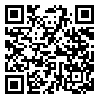Fri, Apr 4, 2025
[Archive]
Volume 11, Issue 2 (June 2015)
IJEEE 2015, 11(2): 154-164 |
Back to browse issues page
Download citation:
BibTeX | RIS | EndNote | Medlars | ProCite | Reference Manager | RefWorks
Send citation to:



BibTeX | RIS | EndNote | Medlars | ProCite | Reference Manager | RefWorks
Send citation to:
Damchi Y, Sadeh J, Rajabi Mashhadi H. Considering Pilot Protection in the Optimal Coordination of Distance and Directional Overcurrent Relays. IJEEE 2015; 11 (2) :154-164
URL: http://ijeee.iust.ac.ir/article-1-739-en.html
URL: http://ijeee.iust.ac.ir/article-1-739-en.html
Abstract: (6392 Views)
The aim of the relay coordination is that protection systems detect and isolate the faulted part as fast and selective as possible. On the other hand, in order to reduce the fault clearing time, distance protection relays are usually equipped with pilot protection schemes. Such schemes can be considered in the distance and directional overcurrent relays (D&DOCRs) coordination to achieve faster protection systems, while the selectivity is maintained. Therefore, in this paper, a new formulation is presented for the relay coordination problem considering pilot protection. In the proposed formulation, the selectivity constraints for the primary distance and backup overcurrent relays are defined based on the fault at the end of the transmission lines, rather than those at the end of the first zone of the primary distance relay. To solve this nonlinear optimization problem, a combination of genetic algorithm (GA) and linear programming (LP) is used as a hybrid genetic algorithm (HGA). The proposed approach is tested on an 8-bus and the IEEE 14-bus test systems. Simulation results indicate that considering the pilot protection in the D&DOCRS coordination, not only obtains feasible and effective solutions for the relay settings, but also reduces the overall operating time of the protection system.
Type of Study: Research Paper |
Subject:
Protection
Received: 2014/11/29 | Revised: 2015/06/27 | Accepted: 2015/06/27
Received: 2014/11/29 | Revised: 2015/06/27 | Accepted: 2015/06/27
| Rights and permissions | |
 |
This work is licensed under a Creative Commons Attribution-NonCommercial 4.0 International License. |








